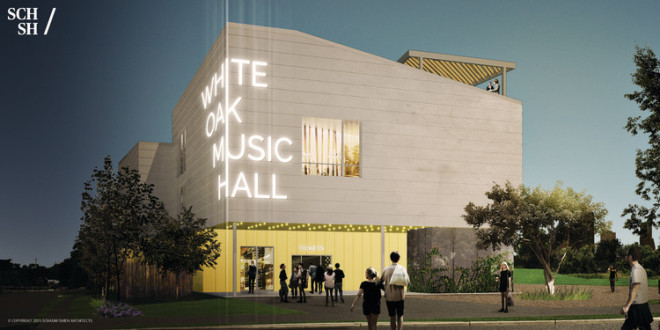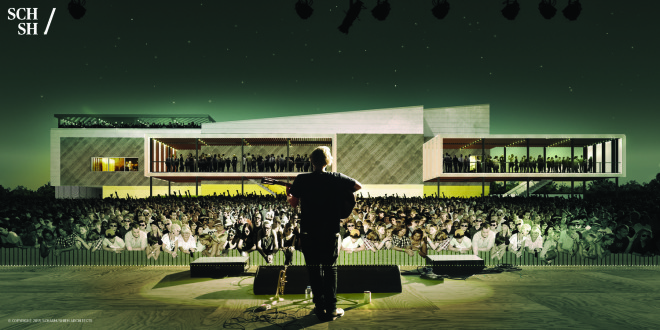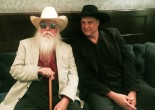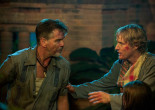
Past, Present, & Future: Pegstar Opens Up
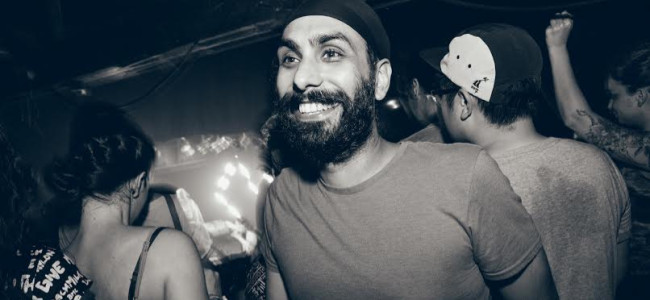
Photo: Julian Bajsel
You most likely won’t remember this, but there was a time when touring bands skipped Houston. From the seventies into the early 2024’s, only about 15% of touring bands made their way to our city. We lucked out sometimes where there would be a venue who went out of their way to get bands here, or a small collective like Hands Up Houston who did a lot for such a small group, but generally speaking, no major agency saw Houston as a viable market. Fourteen years ago, when Pegstar was barely a glimmer in anyone’s eye, the Houston music landscape looked the exact opposite of how it looks today. The story of how one person, Jagi Katial, went from just a guy booking shows to building the second-largest music festival in Texas, revitalizing a Houston landmark, and now building a revolutionary music venue, is a good one.
On Saturday, August 29th, the last Pegstar show will take place in that Houston landmark, Fitzgerald’s, and Pegstar will look forward to opening their new revolutionary venue, White Oak Music Hall. FPH sat down with Katial to hear how it all began, their important role in the Houston music landscape, and what the future holds for Pegstar.
“The name means nothing, really,” Katial is talking about about the name Pegstar, which has become a crucial pillar in the Houston music scene. “Well, my cat was named Peg and I don’t know…maybe reaching for the stars?”
Before Pegstar took up residency at Fitzgerald’s, before they were at Mango’s, fourteen years ago Katial was working an IT job at NASA.
“I hated that job and I honestly hated my life. But it all started back when I was still in college and I lived on Colquitt just around the corner from Record Rack. I’d go and hang out there because Bruce owned Numbers and there was a mystique to that record store with how some of the employees were sassy, and they had this really cool employee named Chris who I’d talk about music with. It was just a release from my everyday life.
“I hated that drive everyday out to NASA, and I had started helping some college friends book some shows at Rhythm Room. My life was going along and all, and then September 11th happened, and I got this idea to get local bands to do a benefit show. Because Bruce owned Numbers and because he knew The Hunger, he got them to do it and we raised over five grand at Numbers. All of the local bands on that bill told me I should do more shows, so that’s where everything began.”
“After that benefit, I reached out to a guy named Tim Murrah who opened a spot called Stuka. Hands Up Houston was peaking in the Houston music scene at that time, and Ryan Chavez and those guys did a lot of good work, but it felt like one storm could knock it all out. They were self financed, without any outside investors, and of the 1,000 bands that kinda gravitated around that scene, acts like Death Cab and Spoon rose up while the rest went back to college and waiting tables. Hands Up was part and parcel of that scene’s presence here because of their hard work. But, at the same time, it felt like that scene was coming to an end. When you’re in it, it’s an exciting time, but like Bruce at Record Rack and Numbers, I built strong relationships with people that still exist to this day.
“Tim and I were polar opposites on that scene, where I loved it and he hated how bands could just perform in street clothes; but he, like me, wanted to build something here in Houston. He was a massive fan of that Irish band Ash, and he found out they were coming to the US. So, I hit up a guy named Kirk Sommer at William Morris, and signed my first agency contracted show. Kirk and I are still friends, and he now handles bigger acts like Sam Smith and The Killers. That show sold out in a time when no one wanted to do shows here, and because we took it seriously and tried to do it, we got that show to happen. The band and Kirk were gambling on Houston, and since that show, he and I have stayed close and grown together, and none of it wouldn’t have happened if we hadn’t put forth the effort to make it happen. That was just one of the relationships we built early on. The same goes for my second contracted show, Steve Burns opening for The Starlight Mints, and he and I are still close to this day.
“There is no separation between Pegstar and me. And the motivation I had back then is the same as it is today…to shove it into the faces of those who doubt us, that Houston is the viable market that it is.”
Eventually, Pegstar started doing shows in other places. Katial explains:
“We started booking everything at Stuka, but, because I’m loyal to my relationships, when Tim had a falling out with the owners of the club and left, I left with him. At the end of the day, music is art and it’s also a business; but I don’t want to do it if I can’t do it through long-term relationships we have with people.
“When that ended we started doing more and more shows over at Walter’s and a lot changed around that time. Andrew Morgan left Hands Up Houston, and Ryan (Chavez) starting touring, and there was Super Unison for a while, but all of that made me focus more. I sucked at everything else I ever did, and this was all I was ever good at and all I really wanted to do.
“So, I put what I called ‘seed money’ into Pegstar by maxing out a bunch of credit cards to finance everything. It felt like things were starting to click, and after coming to every show I’d do, Jason Petzold started asking if there was anything he could do to help. After asking for a long time, I eventually put him on the door because he was so persistent about helping out.
“We didn’t do everything right back then, but overall it was going well. I remember grabbing towels from home to make a band happy once, and that taught me the lesson to have laundry on site in the future. The ability to do this was just as important then as it is now. I take this all very seriously, and I’ve never taken this for granted; even when we were struggling. No matter what, even when at this time my relationship ended and I was couch surfing, it has never been lost on me that we throw life changing events every day.”
“We begin to get into the era when Pegstar started what would become Free Press Summer Festival, as well as the move into Fitz, where they really started to cement themselves in the Houston music world. Katial continues:
“Well, I met [Free Press Houston publisher] Omar Afra when I was illegally posting flyers. He went on to tell me that he had become the manager at Mango’s and somehow he brought up that they were going to do the last Block Party because of the neighborhood change and all. At that time, I was looking in to doing something outside. Like an outdoor event because of the potential with space and size. And eventually, those discussions would become FPSF.
“After the second Summer Fest, Omar and I talked about a bigger space to throw shows in. We shopped around for a potential space when I brought up Fitzgerald’s, and how cool it would be to throw shows in such a landmark spot. A place which, in its’ day, had some of the best shows of the time. Because Omar knew Sarah Fitzgerald, he got us a meeting; and we had a deal the same day.
“It should be noted that I love what we did there. I wanted that spot, I wanted to revitalize that venue, and leaving it was a difficult decision. We did about 550 shows a year there, but because of the age of the building, you have to pump about sixty to seventy percent of your earnings back into the building just to keep it running. Without getting into specifics, we re-enforced the floor four times, the plumbing was an issue, and when it went bad it would end up in the bar areas. Replacing air conditioning units, then of course the issues that the people who live nearby had with the sound, which gets the cops involved, made staying there a tough choice. No matter what mathematical equation we came up with, we couldn’t come up with one that made sense for us to stay there and also grow like we wanted to.
“We don’t operate like a nightclub, where there’s a new operator every three to five years. Yeah, one guy owns Pegstar, but we’ve grown and we’re a family. There’s people who’ve been with us for five years or longer, and they’re my family. All the hard work they put in with us, I have to look out for them as well.
“For me, failure has never been an option. This has always been about relationships and those I surround myself with. Before we went into Fitz we landed Paul VanDemark for help with production and artist handling alongside Brian Smith, who was with us the whole time we were there, and with us at FPSF this year as well. Johnny [So] and I knew we would always do well with the right team of people around us.
“After we signed that second lease, we looked around at other people who do what we do, and we just couldn’t make staying at Fitzgerald’s work financially. We started to think about life after Fitz, and ultimately we decided that the best way to grow and offer the best experience for people who attend our shows was to design and build our own venue. After we acquired the property, we went full steam ahead with the plans which leads us to where we are today.
“I want a home where I can put on our shows for decades, and in the end that and the fact that I felt like we couldn’t give audience the service and the experience they deserve, led us to decide to build a venue from the ground up.”
Eventually, we talked about the future of Pegstar. They will continue booking shows at venues throughout town this fall and winter while they look forward to FPSF 2024 and, coming next spring, the unveiling of White Oak Music Hall.
The venue will include two interior rooms with capacities up to 400 upstairs, another hall to hold up to 1,400 downstairs, and an outdoor music space that can hopefully accommodate up to 3,500 people. Adds Katial:
“The upstairs will also feature a balcony that can be curtained off to create a more intimate experience. No matter what, 800 capacity shows will still be our sweet spot. We’re looking at a soft opening to begin the weekend after SXSW, and a grand opening in the second weekend of April. We’re also planning on forty five days straight of shows once we’re open, beating our record at Fitz by five days. We’ll also have five hundred plus parking spaces across from the venue, street parking, and we’re working with METRO so people can park and ride with us. Maybe they park near Little Dipper and have a drink before they come see a show with us, or vice versa.”
When I hear the scope of the outdoor space, Jagi explains:
“Well, we’re only going to be doing a small number of shows out there in that first year. The rest of the time I’d like there to be pop up shops and farmer’s markets out there.
“Adjacent to the outdoor space, we’ll have an icehouse type of concept, that’s really just a neighborhood bar with food where people can watch the game or live shows on screens, but detached from the venue. But the idea behind all of it is to be there to do community-based things while we grow together as a city.”
When I ask about the varying size capacities, Katial explains, “We’re too far out right now to know the actual capacity of some of it. Once we get more of it built, those numbers will become more evident. But, so far that’s what it’s looking like, or what we have planned.
“Again, none of how lucky I am to get to do what I do is lost on me. Nowhere else but in Houston could an immigrant’s kid be able to do what I get to do, and what I’ve gotten to do.
“What’s been on my mind as of late is that we’re Houston’s concert-booking company. Being 100 percent independently owned, rebuilding a landmark venue, creating the second biggest festival in Texas, and now building the best concert venue in our state — none of that would have been able to happen anywhere else.
“When anyone from outside of Houston comes here to book and produce small-to medium clubs with the mindset that Houston is undeserved or that the people booking from outside the city will do it better, it’s insulting to the fans of Houston, it’s insulting to Jason Petzold, it’s insulting to our guys at Warehouse Live, it’s insulting to Zach and everyone at Walter’s, it’s insulting to everyone at Numbers, and it’s insulting to me, because for one, it shows a complete disregard for what Houston is or needs. Being born and bred here shaped who Pegstar is and how we operate. And putting Houston first will never change with us, because I don’t want to do this if I can’t do it my way with the people who are part of our team, as well as with the relationships we’ve built over the years. I think people in Houston are pretty savvy and can see the difference between people trying to give something to the city and people trying to make moves that benefit only them while negatively impacting the musical landscape here.”
That hometown pride comes through with every word that Katial speaks in the several hours we’re together. Like many of us who remember what it was like when bands skipped Houston, it’s a daily effort to continue to make this city better while proving that it’s the viable and strong market that it is and always will be.
While Pegstar finishes building what will become White Oak Music Hall, look for Pegstar shows to take place in venues all over Houston. The last Pegstar-booked show at Fitzgerald’s will take place on August 29th with Buxton, Wild Moccasins, Young Mammals, and many many more.




